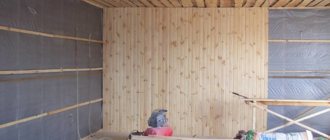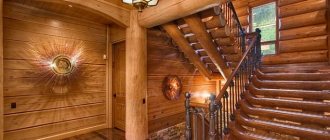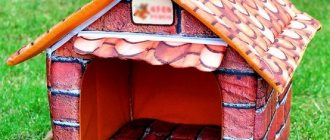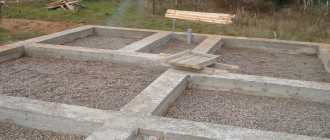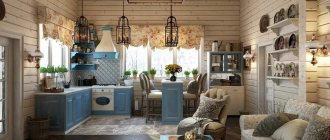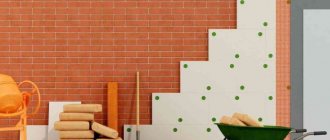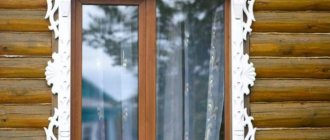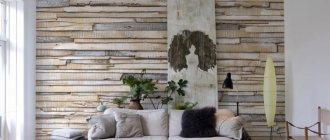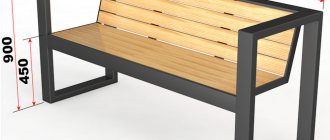Gradually, various synthetic finishing materials, such as wallpaper or plastic, are fading into the background. Natural, environmentally friendly materials are coming back into fashion. Wooden lining is just one of them. Since wood fades over time and is exposed to various types of exposure, owners of houses and apartments often have questions about how to paint the lining inside the house. The lining is suitable for both external and internal decoration. But how to use it correctly for interior spaces?
Why do you need to paint the paneling?
Many people believe that since there is no rain, snow, or wind inside the house, there is no need to paint the lining indoors.
But this is a misconception. So, why do you need to paint the lining:
- It should be remembered that the lining is made of wood. And wood catches fire easily. Naturally, no protective material will provide absolute protection against fire. But there are compounds that significantly increase fire resistance.
- Over time, the tree begins to rot. To avoid this, it must be coated with a special compound - an antiseptic. It is colorless, so the original wood texture will be perfectly preserved.
- The paint and varnish coating serves to protect against mechanical damage, taking on all impacts and scratches, preserving the beauty of the walls.
- The paint and varnish coating protects the wood from exposure to ultraviolet radiation, thereby protecting it from darkening.
- Just for beauty. If you do not want to change the natural wood color, applying a special varnish will make the wall covering brighter and shiny. Or vice versa, many paints completely hide the original wood color, preserving only the structure of the wood.
Painting wood while maintaining texture
Coloring to more clearly highlight the texture, also called brushing, is carried out with varnishes, oils, resins, and wax. They lie tightly on the surface, almost painting over the fibers, but the large pattern is clearly visible. Special preparations are added to paintwork materials to protect the tree and get rid of existing problems. Modern texture paints include:
- antiseptic additives;
- light-protective from UV rays;
- waxes and oils.
Together they give the coloring agent waterproof properties, biological protection, and protect against fading in the sun. A special property of paintwork materials used for surface texture treatment is thixotropy. Thick paint, when applied with a brush, liquefies, penetrating deeply into all pores, then becomes viscous again. The layer is easy to level and no smudges form.
Pokarska tree
Painting technology: paint is applied and rubbed. After 10 minutes, when it is absorbed, remove excess oil with a soft, lint-free cloth. The pattern appears more clearly due to the fact that the pigment remains in the grooves and is removed from the elevated part.
Please note: Features of painting the ceiling with acrylic composition
In addition to paints, traditional stains are used. Aqueous solutions shade different types of trees; you just need to choose the appropriate color. Be sure to varnish or wax to remove the dull tint. Waterless stains can be used as a base coat.
For texturing, colorless varnish is also used, which at the same time creates reliable protection.
Among natural materials, wax deserves attention, in particular carnauba mastic. The coating is hard and protects well from scratches. It contains various oils and rosin.
Selection of necessary components
What is the best way to paint the lining inside the house?
There is simply no single correct answer. It depends on what goals you set for yourself. If you just want to protect wood from harmful external factors and parasites, then you should opt for an antiseptic. To make dull walls shine, you need varnish. And paint will help you beautifully decorate old lining with new bright colors.
All paint and varnish materials are divided into two main groups: protective and decorative. Let's take a closer look at each of them.
Protective compounds
These products are designed to protect wood from various physical factors, mechanical influences and parasites. They, in turn, will also be divided into groups, depending on the main tasks performed. Here are the main ones:
- Fire retardants. Products that are absorbed into wood and increase its resistance to fire. Recommended for use when treating interior residential premises. Thanks to the treatment, the wood will not catch fire for much longer, which will either eliminate the source of the fire faster or give the residents time to leave the premises.
- Bactericidal substances. Compositions designed both to prevent the appearance of fungi and mold, and to combat these manifestations. They also contain substances that repel various wood parasites. Thanks to them, the tree is well preserved and acquires an aesthetic appearance.
- Impregnations. Compositions that perform the functions of protection against fungal spores and parasites, as well as changing the shade of wood. Stain is very popular at the moment. It saturates the wood completely, to its full depth, giving the material a darker color and highlighting its structure well.
- Linseed oil. Used to impregnate wood. Oil-impregnated lining is insensitive to moisture and fungus, and also acquires a matte tint and a clearly defined structure.
- Drying oil. Previously, it was actively used when working with lining, but today it is rapidly losing ground. Refusal to use it when impregnating walls is due to the fact that it darkens quite quickly and begins to stick.
- Bleaches. Used to remove various defects from the surface of the lining. For example: stripes, dark spots, bluish tints. Depending on the purpose and method of use, these substances come in several types. Most of them are applied to the material at the site of the defect, left for a while, and then washed off with water.
- Primer. Provides protection for wood from mechanical influences and creates reliable adhesion of the decorative layer to the treated surface.
- Wax compounds. A traditional and very effective protective agent. Wax creates a dense layer on the surface of the wood that does not allow moisture to pass through and is resistant to mechanical stress. It is very difficult to apply evenly. Typically a primer is applied before waxing to make the process easier.
This division is very arbitrary. As already mentioned, many of these products are used separately, without a decorative coating. But their main function is to protect the wood, and giving shade and expressiveness to the structure is a secondary point.
Decorative products
Painting wooden lining with a decorative coating means that the natural color of the wood will be lost. This is usually done after a certain time, when the unpainted wood darkens, or the owners have other creative ideas.
How to paint the lining inside the house? There are many different decorative coatings that meet the tastes of even the most demanding aesthetes. These include:
- Oil paint is a long-term recognized leader in the field of materials for painting wood. It is deeply absorbed inside, thanks to which the painted surface receives reliable protection. It doesn't fade for a long time. The main disadvantage is that the paint takes a long time to dry and has a strong, specific smell. Therefore, it is recommended to carry out repair work in warm weather so that the room can be ventilated.
- Acrylic paint is better than the previous one in all respects. Acrylic paint dries quickly and does not have a strong odor, which makes it possible to carry out work at any time convenient for you. This paint for lining does not fade for a long time, maintaining its original shine, and has good resistance to moisture. The only downside is the high price.
- Acrylic aqualacs are, by all accounts, the best means for processing lining. They are an environmentally friendly product. The varnish forms a reliable decorative coating that is durable, resistant to moisture and mechanical stress.
- Alkyd varnishes - painting the lining is the main function of this type of material. Its advantages are resistance to moisture and temperature changes. Significant disadvantages are long drying time, easy flammability, high price.
- Decorative glaze – thanks to its transparency, it perfectly highlights the wood texture. To give it the desired color, you can add different colors inside.
- Opaque enamels - creates a dense layer on the wood surface, completely hiding all defects and protecting the product from mechanical damage, well suited for country houses.
Painting lining to look like bleached oak
Many people prefer lighter shades, but at the same time they want the structure of the wood to remain noticeable. They call this method the bleached oak effect. This effect can be achieved using the following methods:
- Take a tint that has the appropriate name. Some manufacturers call it “frost” or “bleached oak,” and there may also be other names, but the essence does not change. In this case, you should read the instructions for use, strictly following the recommendations on the method of application. If you add more composition and make the layer thicker, then over time the surface will begin to peel off. Therefore, each layer must have a minimum thickness.
- Pay attention to the composition of the oil with wax of the corresponding name. The application technique allows you to achieve varying degrees of transparency. Typically, this is achieved through the number of layers applied.
- A pigmented polyurethane primer that may be called "white" or "bleached". Depending on the desired result, this primer is diluted with a solvent before use. The disadvantage of this primer is that the surface darkens over time.
- Pigmented acrylic primer, which also needs to be diluted with a solvent. This primer is of higher quality compared to polyurethane, but at the same time, it is more expensive.
Naturally, the choice is always up to the owner. To evaluate the quality of the coating, it is necessary to experiment, taking into account both the quality of the protective materials and the quality of the wood. Therefore, reviews are always different, although, on the other hand, there is not always time and desire to experiment. In addition, few people have all the information regarding the quality and characteristics of certain compounds.
Tips for choosing coverage
When choosing what to paint the lining with, you need to keep these points in mind:
- Oil paint dries quickly, but becomes lighter over time. Therefore, when choosing which paint to paint, dark or light, it is better to choose the first option.
- Painting lining inside a house is a painstaking task. For decorative coatings, it is best to use water-based paint. This is a 100% environmentally friendly product. You can work with it at any time of the year.
- How to paint the lining inside a country house? It is best to choose alkyd varnish. It is durable, resistant to moisture, mold and mildew.
- Eurolining can be painted with transparent polyurethane varnish. It emphasizes the texture and “naturalness” of wood.
- Another good paint for lining is acrylic. It does not change its color for a long time.
- How to paint a clapboard ceiling? Do not use water-based paint. It is better to opt for alkyd varnish or choose oil paint. These products do not spread and dry quickly. You can paint the ceiling without any problems.
On video: the best way to paint wood.
Advantages and disadvantages of painting lining
Painting the lining with enamel or colorless varnish can extend the life of the material. If the board is used for covering walls and work surfaces in a utility room, you can get by with regular impregnation.
In a house or apartment, it is better to paint wood paneling with high-quality paint for practical and decorative purposes.
After all, replacing a damaged top layer of wood is much more expensive than several cans of enamel. You can purchase a ready-made painted board or paint it yourself. Coating panels with your own hands has many advantages:
- Possibility of coloring elements in different colors, applying your own design, texture;
- Saving money. Treated lining is much more expensive;
- Possibility to choose the most incredible shade;
- Increasing resistance to negative external factors;
- Quick drying.
It is necessary to paint the lining before installation. During the normal drying process, there will be no light streaks at the joints that spoil the entire look.
There are practically no disadvantages to painting lining. The main negative point is the loss of the natural pattern and appearance of the wood.
Some negative consequences can be avoided if you take into account the purpose of the room when choosing a paint and varnish material. Oil impregnation and drying oil are not suitable for baths and saunas. It is better to use solid mixtures with the addition of wax. It is not recommended to use flammable, toxic enamels for painting wooden boards in closed, unventilated areas. Painting lining floors should be carried out taking into account the abrasion of the material.
To avoid having to repaint frequently, you should choose mixtures with high wear resistance.
Carrying out work
Having reviewed the options for painting the lining and choosing the method that suits you, as well as all the necessary materials, you can get to work. Here's a list of what you'll need:
- gloves;
- ladder;
- buckets;
- sandpaper;
- brushes of different widths, for painting walls, ceilings, floors and gaps;
- comfortable clothes and shoes that you don’t mind;
- solution for removing paintwork, if the surface was painted;
- metal brush;
- tray;
- the paint materials you have chosen.
How to paint lining inside a house? Actually, the process of applying paint and varnish is conventionally divided into two stages: preparation and painting itself. Let's look at the whole process using the example of how lining is painted white.
How to paint lining inside a house: ideas
Painting techniques and methods are great, but how to fit lining into a modern interior? Just. There are many interesting options. The designers' latest finds are a clapboard wall in a room with smooth walls. It looks creative and interesting. And most often such a wall is made using the brushing technique.
One of the options for using lining in the bedroom interior
An interesting effect is achieved by combining fittings of different thicknesses - in the photo, thin ones are inserted between wide boards. Moreover, they are painted in different shades of the same color. The combination turns out interesting and fresh.
Lining is also used to create interiors in a modern style.
Lining is not necessarily just a flat board with small grooves on one side, which is also called eurolining. There are different profiles, including those with waves and troughs. From them you can assemble interesting walls, the relief of which is emphasized by painting.
You can assemble interesting reliefs from linings of different profiles. To make it look more interesting, highlight the reliefs or whiten them
As usual, in the interior, a lot depends on the light. Several non-standardly designed lamps - long translucent strips behind which lamps are hidden, installed in the middle of the ceiling - and the interior is completely transformed. This design can be used to decorate rooms for young people, creative living rooms, etc.
Very interesting solution with lighting
You can play not only with light, but also with color: in the lighting zone, paint the lining in a lighter color, thus emphasizing this zone.
Play of light and color reflected in the mirror
If you have good drawing skills, you can paint the lining. Just don’t forget to then cover the entire painting with colorless oil or varnish to preserve it longer. This technique can be used when decorating a children's room.
Painting on lining
Rigidly defined lining panels look great in the interior of an office, living room, or hallway. In the same vein, you can decorate the wall in the dining area in the kitchen. Only its quality and coloring must be perfect.
The honey shade of the lining is repeated on the ceiling
Treatment for a rustic-style interior can be deliberately imperfect. These are rooms with a masculine character.
The rustic style will appeal to men. In this case, painting the lining using the brushing technique is the norm. Moreover, the colors are chosen dark
As if in contrast - light walls. The lining is whitewashed and the beams are painted dark. Despite the traditional materials used for centuries, the look of such a room is modern and stylish.
An excellent combination is light walls with the effect of bleached oak and dark massive beams. It's practically a win-win option.
Variation on the same theme
Lining is also used in the decoration of bathrooms. Impregnation here needs to be given maximum attention, but if the ventilation in the bathroom is at the level and the impregnation is protected from moisture, then there should be no problems. And the interior, you see, is very interesting - warm wood tones combined with bright marble are a great move.
Lining in the bathroom
Lining is also used for finishing balconies. You just need to fill it horizontally - this way you can expand the small space. And light colors look better in such a small area, maybe with a dark edging.
Whitewashed paneling on the balcony
Ceiling - lining, painted with light stain
Preparing for painting
How is the lining prepared for painting? First of all, you need to clean it of dirt. This is done using ordinary water with soda diluted in it. If the surface has already been painted, then the old layer of paint must be removed using a painting tool at hand. Repair faulty panels (if any).
After this, they move on to the next step - grinding.
In this case, it is best to use pumice or sandpaper. It is advisable to divide the entire area being processed from the inside into small sectors and sequentially grind them one after another. This way you won't lose sight of any unprocessed segment. You need to sand evenly.
After sanding, they begin priming the coloring material. The debris remaining after grinding is removed from the surface. Then, using a brush, apply a layer of primer, paying particular attention to the seams.
Painting
So, we are close to answering the question of how to paint the lining white.
Having completed all the preparatory procedures, you can proceed directly to painting. How to paint lining?
You will need paint for the interior of the house and at least two brushes: a large one for the main work, and a narrow one for the gaps. The material is applied in several thin layers. The paint is applied first to the upper edge so as not to stain the already painted area with smudges. After the first layer has dried, the second is applied. This is followed by the third layer, which is also, as a rule, the last. The last layer should be the thinnest. It is applied with light, even movements. Then the paint is left to dry - the job is done.
How to cover a wooden surface (2 videos)
Varnishes and paints for lining (38 photos)
Lining painting technology
Factory-painted lining elements cost several times more than untreated boards. The services of hired workers will also not be cheap. To save money, you can carry out all stages of coating yourself. Fortunately, this is not difficult to do.
Properly selected consumables and auxiliary materials will enliven the interior and fill the house with new colors.
The application of enamel should be carried out after antiseptic procedures, priming and varnishing. When working with any mixture, certain rules must be followed. Only in this case can you count on a positive result.



